This dunderi gnocchi recipe is perfect for winter with it's bright citrus flavor, and simple butter sauce.
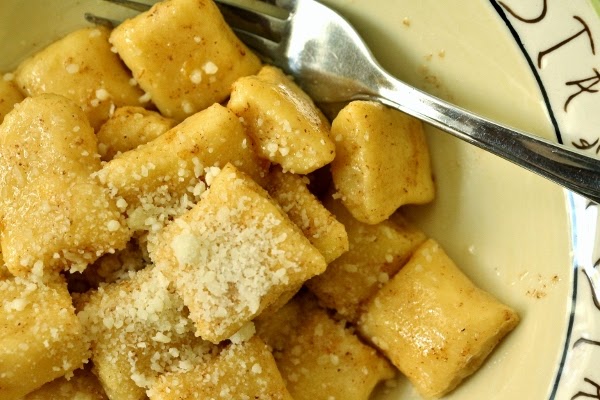
I'm absolutely obsessed with Jenn Louis's cookbook Pasta by Hand. My most recent exploration was the Dunderi, hailing from the Amalfi Coast in the Campania region of Italy.
 |
| Everything but the flour... |
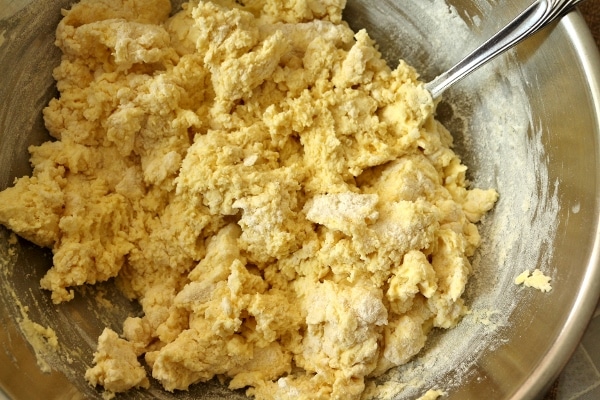 |
| Finished dough |
Dunderi are delicate ricotta dumplings enriched with egg yolks and held together with just a bit of flour. Be careful when you roll them out to keep the excess flour to a minimum. Use just enough on the dough to keep it from sticking to the board, and then scrape away extra flour with your bench scraper.
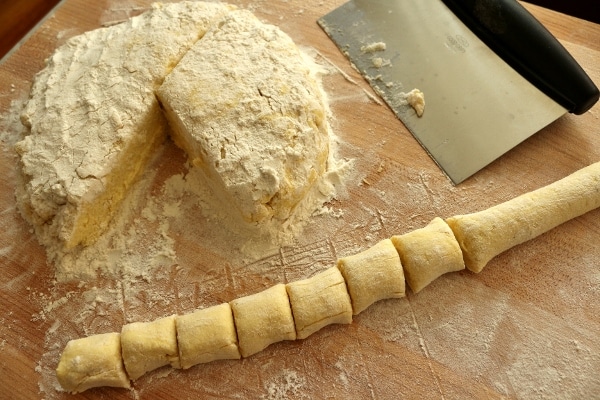
These are incredibly easy to make. My one pound package of ricotta cheese (supposedly weighing 452 grams) actually contained exactly 480 grams, which is perfect for this recipe.
Many brands of ricotta come in either 15 ounce or 32 ounce containers. If you can find one that's exactly 1 pound, you may luck out and have just a teeny bit extra in there like I did!
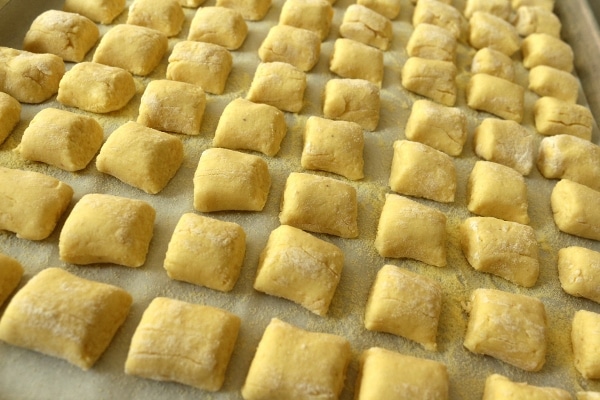
The Dunderi recipe in the book suggests pairing these light ricotta dumplings with melted butter or tomato sauce, as it's most traditional. It also points out that these are sometimes made with lemon zest from the amazing Amalfi citrus, so why not include the citrus in the butter?
Tasting Table offered a version of this recipe doing just that. I've utilized that sauce adaptation in the recipe I'm sharing today.
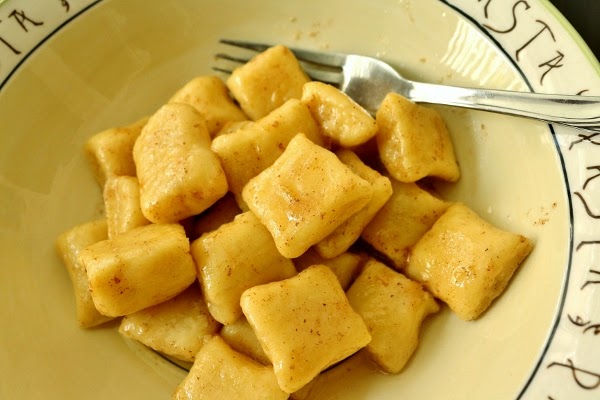 |
| Dunderi B.C. (before cheese) |
For ease of preparation alone, I definitely think these Dunderi are worth making. You can have a homemade gnocchi dinner in less than 30 minutes.
No need to cook, peel, and process potatoes through a food mill or ricer. This recipe doesn't require a special, time-consuming sauce. You don't even have to shape them on a gnocchi board or fork. These are as simple as gnocchi gets! They're also less carbs than the potato variety.
They are a bit less melt-in-your-mouth tender than the Ricotta Gnocchetti in the book, or even the Spinach and Ricotta Gnudi I've previously shared. That being said, from my experience the dough is easier to work with and shape.
They do contain more flour and eggs (yolks in this case) than the Ricotta Gnocchetti. This can lead to them being a bit more firm, but also richer in flavor from the surplus of yolks.
In any case, they are definitely worth trying! I still found them to be incredibly delicate, and loved them in a simple tomato sauce as well. I served half the dunderi with lemon and butter, then froze the other half for another day. Then I cooked and served the remainder with tomato sauce made with fresh local tomatoes.
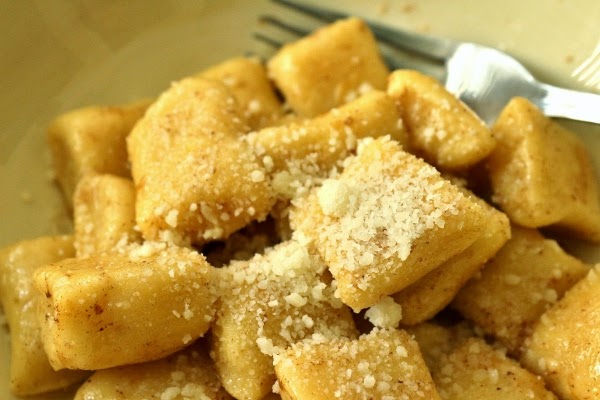
And P.S. Definitely freeze those whites! I like to freeze them individually in the cups of a silicone muffin pan so I can pop them out easily and transfer them to a freezer bag to thaw and use later.
This is a great way to "collect" egg whites (which freeze beautifully) to use them later. Egg yolks do not freeze well, so make Dunderi first and then stockpile your whites for making meringue, angel food cake, marshmallows, and more!
Other recipes you may like
- Gnocchi al Sagrantino all’Amatriciana
- Ricotta Cavatelli
- Pici (Pinci) Pasta
- Spinach and Ricotta Gnudi with Tomato-Butter Sauce
Tried this recipe? Please leave a star ⭐️⭐️⭐️⭐️⭐️ rating in the recipe card below and/or a review in the comments section further down the page. You can also follow me on social media on Facebook, Instagram, and Pinterest!
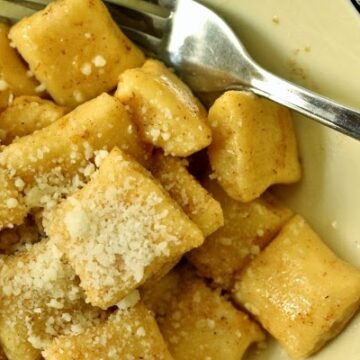
Dunderi with Lemon and Butter
Ingredients
Dunderi:
- 480 grams (2 cups) whole-milk ricotta cheese, homemade or store-bought
- 6 egg yolks
- 45 grams (½ cup) grated Parmigiano-Reggiano cheese
- Pinch freshly grated nutmeg
- 1 teaspoon kosher salt
- 160 grams (1 cup plus 2 tablespoons) all-purpose flour, plus more for dusting
- Semolina flour for dusting
Sauce:
- 113 grams (1 stick) unsalted butter
- 2 teaspoons fresh lemon juice
- Zest of 1 lemon
- Kosher salt
- Parmigiano-Reggiano for serving
Instructions
- In a large bowl, mix the ricotta and egg yolks until smooth. Stir in the Parmigiano-Reggiano, nutmeg, salt and flour until the dough just comes together.
- Dust a work surface with a 30 grams (¼ cup) all-purpose flour. Scrape the dough onto the work surface and sprinkle with an additional 30 grams (¼ cup) flour to prevent the dough from being too sticky to roll.
- Line a rimmed baking sheet with parchment paper and dust with semolina flour.
- Using a pastry cutter or bench scraper, divide the dough into 6 equal portions. On an unfloured surface (or one with minimum flour), roll each piece into a log about a ½ inch in diameter. Cut the log into ½-to-1-inch-long pieces. Place the dunderi on the prepared baking sheet and repeat with the remaining dough. Make sure the dunderi pieces are not touching, so they don’t stick together.
- The dunderi can be made, covered and chilled in the fridge for up to 2 days or frozen on the baking sheet and transferred to a resealable plastic bag. Use within 1 month. Do not thaw before cooking.
- Bring a large pot of salted water to a simmer over medium-high heat. Add the dunderi and simmer until they begin to float to the surface, 1 to 3 minutes.
- Meanwhile, in a large skillet over medium heat, melt the butter until the butter becomes golden brown and turns toasty, 6 to 8 minutes. Be careful so it does not burn! Add the lemon juice and zest (it will splatter–be careful), and season with salt. Add the dumplings and toss to coat. Top with Parmesan and serve immediately.
Notes
- *Variation* Dunderi may also be served simply with melted butter or a basic tomato sauce.
- This recipe uses kosher salt (aka cooking salt, kitchen salt, coarse salt outside of the US). If you are using table salt, definitely scale down the salt as that is a saltier type of salt! The type of salt will make a big difference in how salty your food tastes, so keep that in mind.
- Adapted from Pasta by Hand & Tasting Table
Nutrition
*All nutritional information is based on third-party calculations and should be considered estimates. Actual nutritional content will vary with brands used, measuring methods, portion sizes and more.*

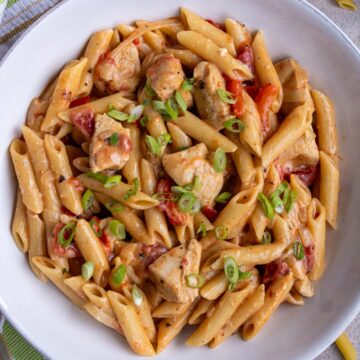



Comments
No Comments